|
|
Thursday Review: Moving the Goalposts with Ultra; M2 and Mac Pro Down the Road Apiece; Monterey Webcam FixBy Graham K. Rogers
Latecomers to the speculation were a green iPhone and a purple iPad Air. The former rumor was unexpected. It turned out to be true, but there were two different greens. As Apple does vary the colors, the purple option for the iPad Air was nearly true. The iPad Air colors are black, white, electric orange, dark cherry, English lavender, and marine blue. To add to that a rumor that the iPad Air would appear with the M1 chip was also confirmed. This puts it close to the iPad Pro in the performance stakes; but Apple has never been averse to cannibalization. Another surprise was that there would be a larger Mac mini and the name "Studio" was suggested. Spot on, but this exceeded some expectations, particularly with what was inside. I don't think anyone predicted this: too focused on the M2 that never appeared. Along with this mini Pro was the idea of a cheaper "Studio" 27-inch display as well as high end one. In the end, there was just one, but that was quite enough with the options. Another rumor suggested a display with the A-series chip. That was right too as the new display has that chip inside. Despite several rumors about M2 Macs being the best from the event, these did not appear, but what was announced seems to have satisfied many pundits (me too), particularly for the implications concerning the control and development of Apple silicon: there clearly is much more to come.

Mac Studio and Studio Display - Image courtesy of Apple
First to be announced was the long-expected iPhone SE and iPad Air. I was impressed with both. These basic models have several high level features that make both highly attractive. I was pleased by the addition of the M1 chip to the iPad Air. That had helped my decision to buy the iPad Pro last year This means the iPad Air is pushing the Pro models. The introduction mentioned a new version of iMovie that will be coming next month and some screen shots were used in the presentation.
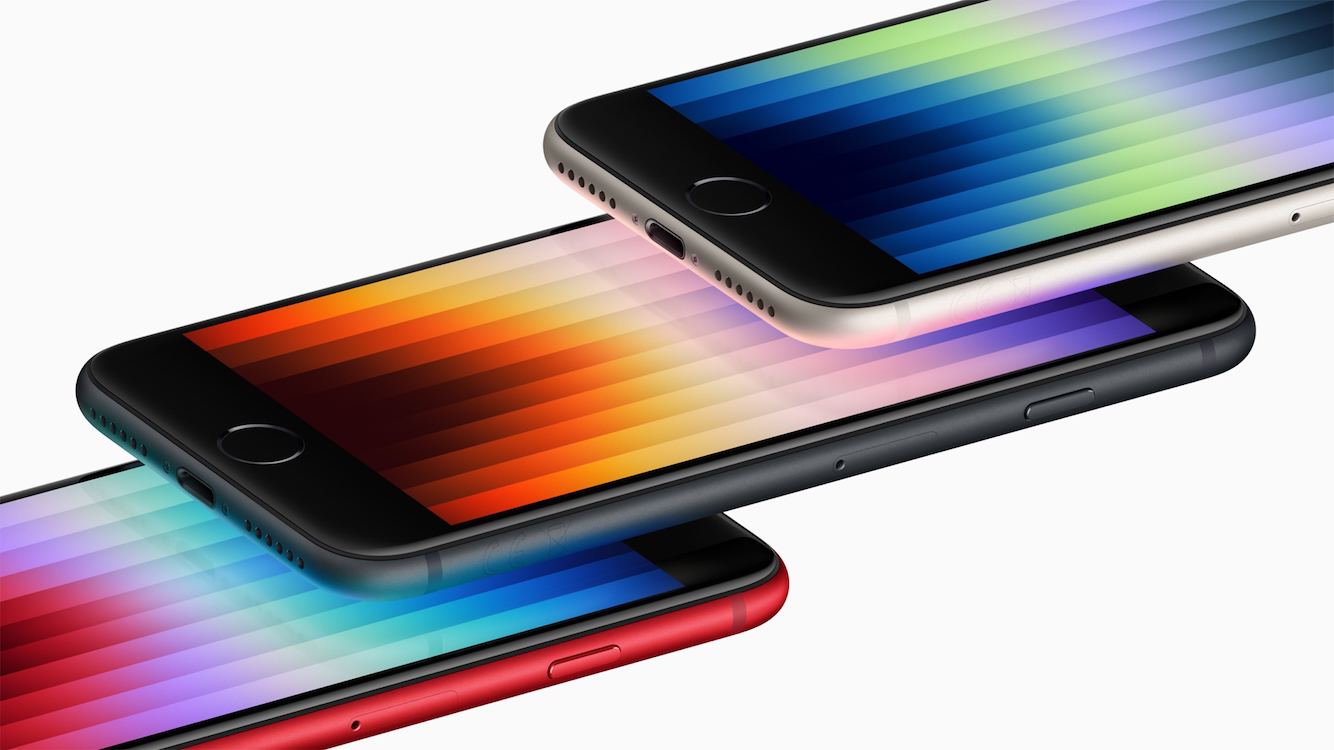
iPhone SE with A15 Bionic chip - Image courtesy of Apple
While looking through the early morning news, Wednesday, Stephen Warwick was first out of the blocks with the next announcement, the iPad Air with M1 chip (not the M2 that some rumors put out), this was also covered by Cody Lee on iDownloadBlog as well as others. This starts at $599. It is priced, starting at 20,900 baht here, but we are asked to check back later for availability: not here for a while yet. One of the recent rumors was confirmed by Michael Simon (MacWorld) and the green iPhone is real. Indeed there are 2 colors: Green; and Alpine Green for the iPhone Pro and iPhone Max. In the USA this is available for ordering on 11 March. In Thailand preorders start 18 March: again unusually quick. We normally have to wait weeks for such new products.
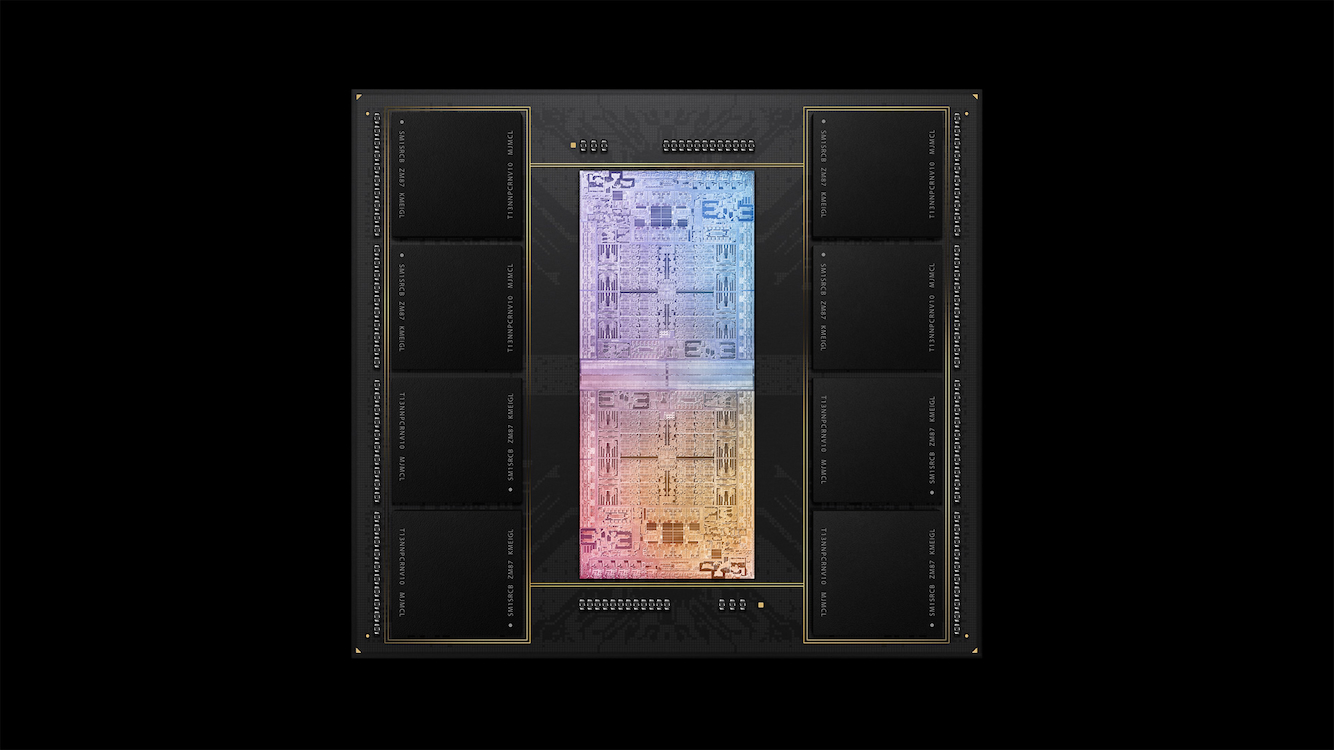
M1 Ultra with 114 billion transistors and up to 128GB - Image courtesy of Apple
The sum is greater than the parts and the presentations outlined some impressive figures, including the ways in which the Mac Studio exceeds the current Mac Pro with its Xeon multi-core processors in some ways. There is clearly much potential to come from the way in which these chips can be extended. John Ternus briefly mentioned that the MacPro will be updated in a couple of months: WWDC? To help us understand the power, Jonny Evans (AppleMust) reports that benchmarking figures from Geekbench have been released: "M1 Ultra delivers a single-core score of 1,793 and a multi-core score of 24,055." He adds that AMD's best chip, Threadripper 3990X achieves 25,133 multi-core and 1,213 single-core." Other useful information in the article are comments from industry pundits. The first M1 was a shock to the system; the M1 Ultra has moved the goalposts again and indicates that Apple is capable of pushing output to far higher levels, and far more quickly than more traditional chip development (e.g. Intel) has been used to.
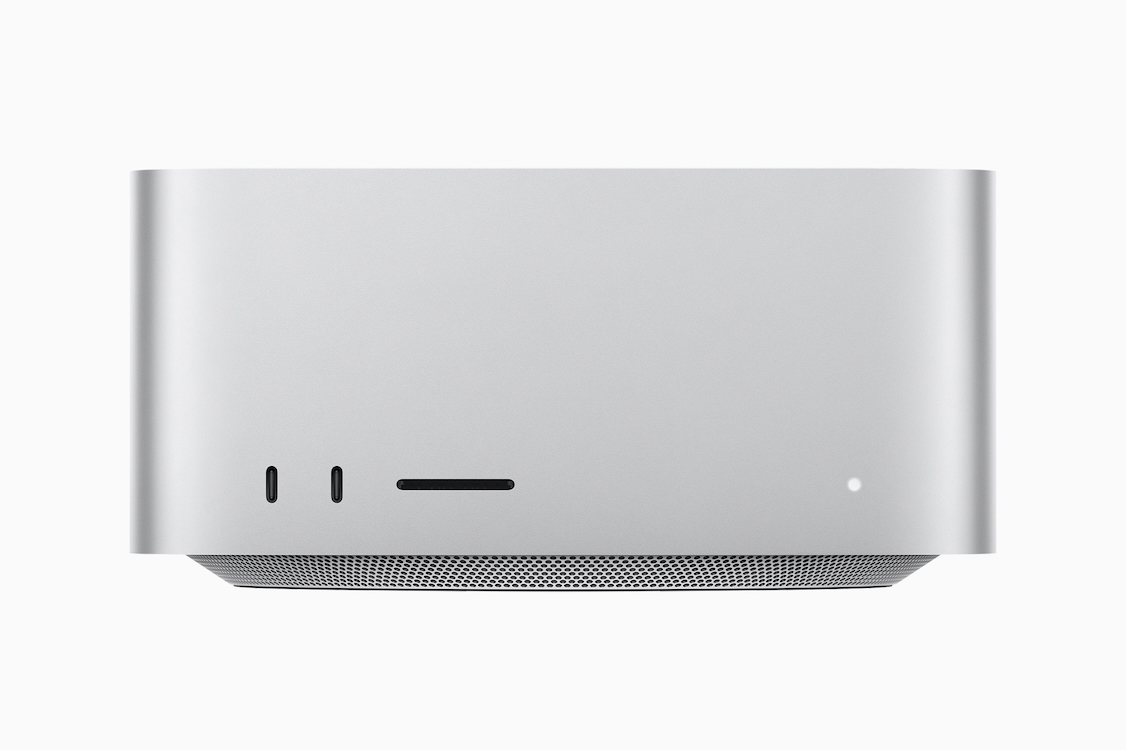
Mac Studio: Front - Image courtesy of Apple
In the review of the M1 Max in October last year, Andrei Frumusanu of AnandTech appears to be unsure of what the chip revealed: "Apple's die shot of the M1 Max was a bit weird initially in that we weren't sure if it actually represents physical reality - especially on the bottom part of the chip we had noted that there appears to be a doubled up NPU - something Apple doesn't officially disclose" [my italics]. The NPU is the neural processing unit. That now appears not to be what this was.
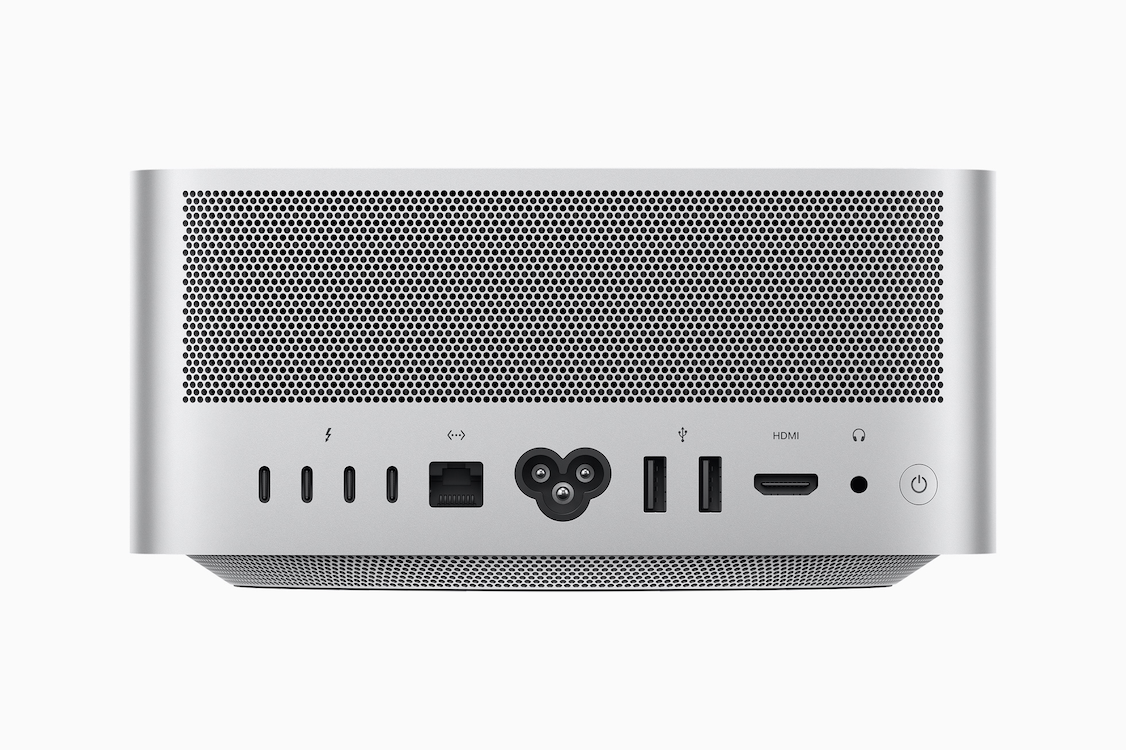
Mac Studio: Back - Image courtesy of Apple
The two versions of the Mac Studio have different weights. Indeed, the Ultra Max Studio is about 1Kg heavier than the Max version. The reason is heat; or how Apple deals with potential high temperatures. Juli Clover (MacRumors) tells us that Apple explains this by the different heat dissipation methods: "the M1 Ultra has a copper thermal module, while the M1 Max has an aluminum heatsink." Copper is heavier than aluminum (or aluminum if you prefer). On the front the Mac Studio has 2 USB-C ports and an SD slot, while the back has 4 Thunderbolt ports as well as Ethernet, two USB-A ports, an HDMI port, and a pro audio jack. Internally, as well as the Apple Silicon there is Wi-Fi 6 and Bluetooth 5. You need to link to this article to see some of what it can do: impressive. Cody Lee (iDownloadBlog) calls this a Mac mini on steroids. In Thailand, the Mac Studio starts at 69,900 baht with the M1 Max chip or 139,900 with the M1 Ultra. There are several options available in Ordering, but no date for release here is shown To go with this new computer, and others perhaps to come, Oliver Haslam (iMore) reports on the announcement of Apple's new 27" 5K, Studio Display. He writes that it "features three USB-C ports and a single Thunderbolt port, with support for 96W of power via that port" - that will allow charging of a MacBook Pro. Pricing starts at $1599: 54,900 baht here, with orders open now. There is a higher priced version (65,900 baht) with nano-textured glass instead of the standard glass. There are still two Intel versions of the Mac mini, but with the 27" iMac no longer available, who knows when these will follow, or be updated. As well as the display, Apple also put out a new keyboard. Hartley Charlton on MacRumors describes the Magic Keyboard with Touch ID and Numeric Keypad. There are color options of black or silver. This is available here, now, for 6590 baht. I accidentally added it to my bag. Fortunately the Apple Store makes it easy to delete with just a right to left wipe.
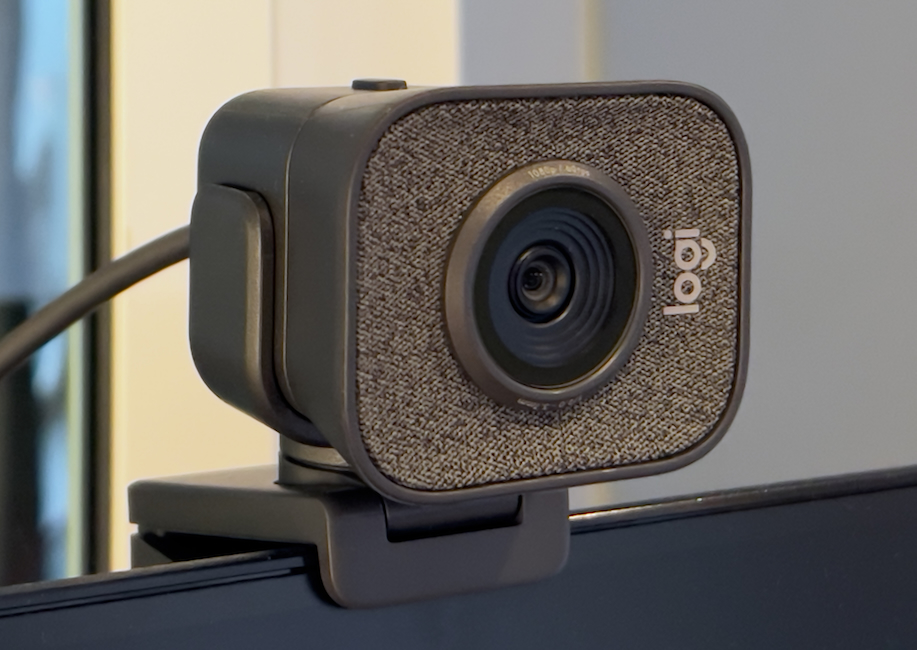
Having had success with FaceTime I started a room in Webex to test that it would work in that application: that also worked properly. Before, when the Logitech cam was attached, the MacBook Pro screen would flash, and it was that that suggested the power access problem. All was well. When it came time to run an online meeting with a class of graduates, I tried the OWC hub. That too worked without any problem.
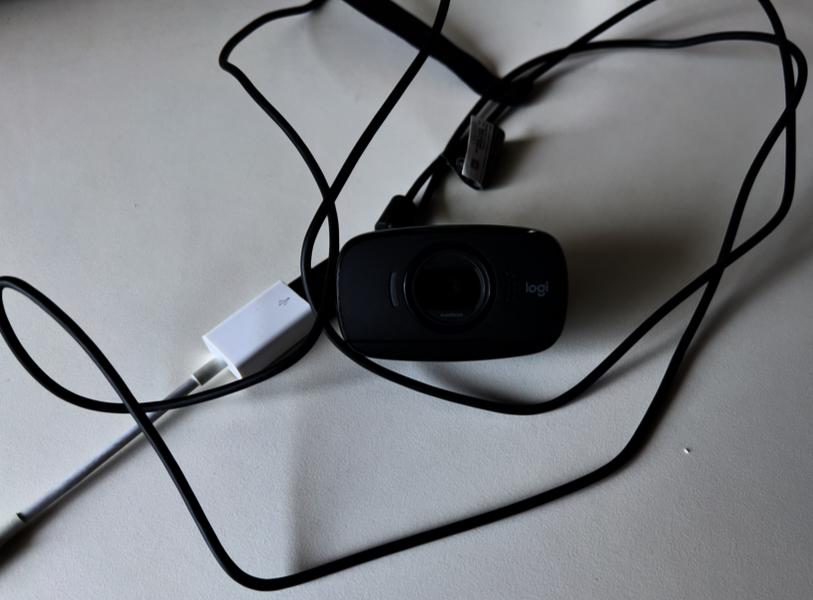
Graham K. Rogers teaches at the Faculty of Engineering, Mahidol University in Thailand. He wrote in the Bangkok Post, Database supplement on IT subjects. For the last seven years of Database he wrote a column on Apple and Macs. After 3 years writing a column in the Life supplement, he is now no longer associated with the Bangkok Post. He can be followed on Twitter (@extensions_th) |
|


